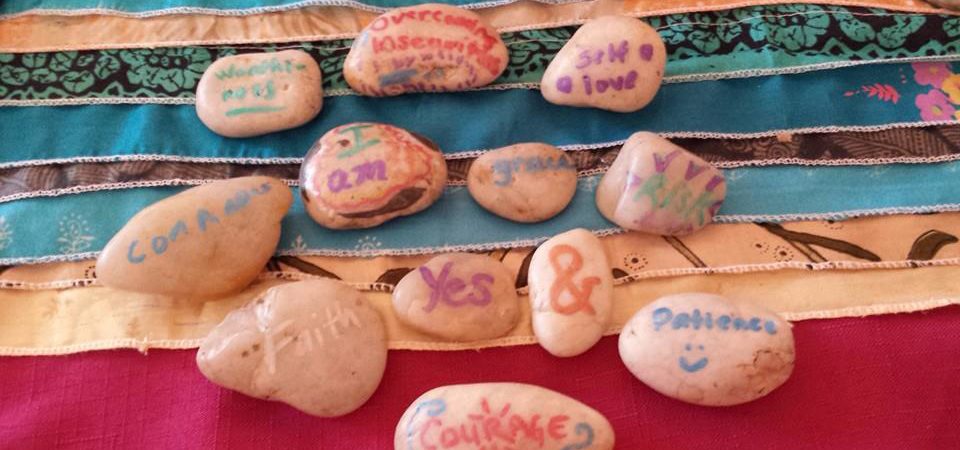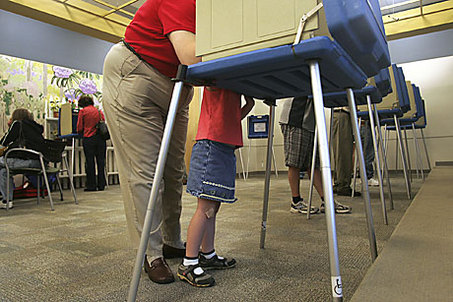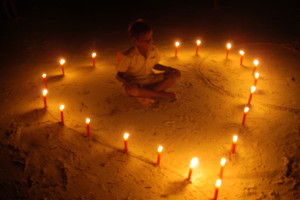sprickett
Show Some Love
May 17, 2017Whether it’s lunch money, a bill tucked inside a card, allowance or any other special occasion, bring a little whimsy to the experiences with these origami-style hearts, a little reminder that love is the greatest wealth there is.
Ways to Wait
November 30, 2016It’s easy to get impatient when waiting for something exciting. Whether it’s waiting just a few minutes for school to end, waiting till dinner for your favorite meal, or waiting several days, weeks or even months for a special event, trip or holiday, it can be hard not to get impatient. (“Only 287 days till my birthday!” Sound familiar?)
When we’re impatient, our bodies and feelings might give us some clues. Some people notice they are breathing faster. Maybe you find your hands are balled up into fists, or you are using your pen to drum on the table. Maybe you can’t stop bouncing up and down on the balls of your feet or walking around the room. You might feel like you are in a big hurry, or get nervous.
These are all normal when we are waiting for something exciting or important, and sometimes waiting can be fun. But sometimes, we also wait for hard things, like news from a doctor or veterinarian about a loved one or pet who’s sick. And sometimes, we want to just relax!
Patience is kind of like a muscle, and we have to exercise it in order for waiting to be something we are good at doing. If you are feeling anxious about waiting or impatient, or if you want to practice for the next time you need to wait for something, here are eight tools you can practice and take with you for when waiting gets difficult.
-
Look up at the sky and imagine shapes in the clouds.
-
Smile at a friend or family member, or go and talk to them while you wait.
-
Count the number of freckles on your arm, leaves on the ground, change in your pocket . . . count whatever you like! It keeps your mind busy. You could also name (out loud or in your head) as many details of what you see in front of you, or the names of all the United States presidents that you know. What’s important is that you are giving your brain something different to think about.
-
Sing a song (out loud or in your head)
-
Making up a story, either by yourself or with friends.
-
Take ten slow easy breaths. For every breath, think of something you are grateful for.
-
Remember a favorite memory, and try to picture it in your head like a snapshot. What are all the details of the image?
-
Remember your five senses. What can you see and hear? Where are you standing or sitting? Feel the seat or ground below you, or touch what’s nearby is (if it’s safe to do so). Take a deep breath and stick out your tongue. Are there any smells or tastes where you are?
(These suggestions, adapted from A Fine Parent blog, are useful for folks of all ages who’d like to exercise their patience muscles. )
Meditation is another tool that can help us handle those in-between times when waiting is hard. And children as well as adults can benefit from this practice. Through meditation, kids as well as adults can better focus and be present in their lives, which can sometimes make waiting easier.
More than Words
November 8, 2016A lot of times, prayer can seem like something that is done with words and thoughts rather than action. For people who like to use their hands or bodies, it can sometimes be hard to connect to the idea of prayer, and this is doubly true when we are praying with or as children. But around the world, in many cultures and faith, there are prayers that are made with our bodies, with movement or by creating something with our hands. Read more →
The Realness of Digital Church
October 13, 2016Earlier this month, I gathered with Unitarian Universalist leaders of congregations across my state for a cluster meeting to lead a workshop on digital ministry. It was exciting to work with these brick-and-mortar church leaders on using technology and online platforms such as Facebook to build an online community. Being a learning fellow at the CLF, this is something I had a lot of experience doing! Read more →
Dance Break for Joy
July 6, 2016We can express joy in so many ways. One way is with our bodies. You might want to wiggle your fingers and toes. You might want to stretch like a cat or hop like a bunny, you might want to wrap a warm blanket around yourself. You might want to hug a friend, or wiggle in your chair.
Just like there are so many ways to express joy, there are so many ways to use your body to dance your joy! You can dance whenever you feel joyful. You can dance any way you like. And when you don’t feel very joyful, something magical might happen if you can dance anyway. It might even change the way you are feeling!
Send in the Clowns
July 6, 2016Most of us only see clowns in parades and circuses. But for refugees and people who cannot go back to their homes, there are not many parades or circuses, and the children who live in the refugee communities don’t get to see many clowns-or have a lot of fun in general. It’s a hard life for anyone, especially for children, but these clowns are clowning for a cause!
Clowns without Borders is a troupe of performers who visit refugee camps and displaced communities and perform for them. They juggle, they do magic tricks, they make everyone laugh and smile. For more than 20 years, these joyful folks have brought joy to the loves of people who have experienced great struggles and loss. They call it Resilience Through Laughter.
Why is this posted in the UU & You section of Family Quest? Because there are UUs participating in Clown Without Borders today! Here’s an interview with lifelong Unitarian Universalist Sarah Foster:
Sarah Liane Foster, a lifelong Unitarian Universalist, traveled as a professional clown with Clowns Without Borders to Haiti, Turkey, Colombia, Swaziland, and South Africa where children have experienced conflict and injustice. “Laughter is a critical way to heal trauma,” Sarah said. You can read more about Sarah’s story in the Spring 2016 Family pages of UU World as well!
Children* In an Election Season
May 12, 2016*No, this post will not be commenting on the various childishness that we’ve all seen from candidates and their supporters throughout this 2016 election cycle. We’re talking about actual, chronologically-delineated children, most of whom already have an opinion about this election, no matter how little cable news they are allowed to watch. Trust me on this.
Every election season, many of us find our lives inundated with the campaign cycle and its persistent negativity and demagoguery. As Unitarians Universalists, we often struggle with how to respond to the polarization that we see in the news, on social media, in our communities and often our own families and neighborhoods. The democratic process, religious freedom, the shared inherent dignity of all, and the search for truth and meaning, as well as many other values, shape not only our views, but how we choose to live in the world and how we treat others. Read more →
Finding the Helpers
December 9, 2015The other day, I was in a group of seminarians when someone asked us, “Where do you find hope in dark times?” There seems to be so much going wrong in the world that even professional purveyors of hope such as those called to ministry often can lose heart. Read more →
Hopes for the Day
December 1, 2015Setting intentions is a way of practicing mindfulness by focusing on the kind of day, week, year or life you’d like to have, and visualizing the actions you can take to achieve your hopes. It’s a practice that can work for adults, teens and children alike.
If you have time as a family to gather in the morning, take turns sharing your intentions for the day. You could even light a candle or write down your intentions together on a chalkboard or paper, or construct a family ritual of your own. (If time in the morning is stretched thin, you could also take time during the evening or bedtime the night before.)
Children will likely need some help learning this new practice. A good question to begin with is, “What good do you want to invite into your life today?” You can suggest some general feelings that a child might understand and hope to experience: love, peace, joy, fun, safety and success are all good starters.
Brainstorm with children to come up with concrete ways they could experience these feelings during the day, such as “I want to invite success into my life by acing my math test,” or “I want to experience fun by playing with my friends at recess, or “I want to invite peace into my world by talking to kids at school that look lonely.” Yoga Chicago offers some other great suggestions for setting intentions with children that apply well for all ages.
Lastly, visualize these things happening: sitting down to take the math test and knowing all the answers, being a good friend to classmates so that you can enjoy fun together at recess, being mindful of which classmates could use a friendly ear, and striking up conversation. (Visualizing your hopes for the day is also a great meditative exercise for adults, too!)
For additional ideas for setting intentions for yourself or for your family, visit Playful Planet’s website.
Renew Your Membership
We invite you to join your fellow CLFers to renew your CLF membership and stewardship of the CLF for another year.
Support the CLF
Can you give $5 or more to sustain the ministries of the Church of the Larger Fellowship?
Newsletter Signup
About
Quest for Meaning is a program of the Church of the Larger Fellowship (CLF).
As a Unitarian Universalist congregation with no geographical boundary, the CLF creates global spiritual community, rooted in profound love, which cultivates wonder, imagination, and the courage to act.
Contact
Church of the Larger Fellowship Unitarian Universalist (CLFUU)
24 Farnsworth Street
Boston MA 02210







